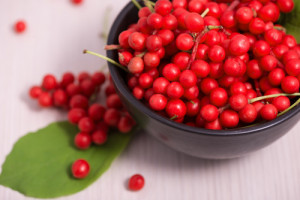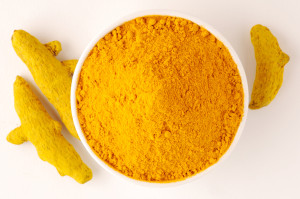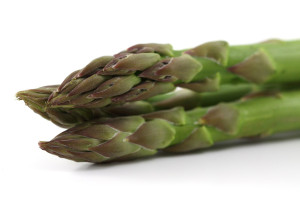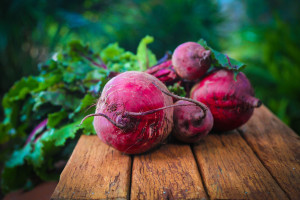Eating by color is a healthy way to get your recommended daily servings of fruits and vegetables but also a great way to gain a greater appreciation for the positive impact they can offer. Stuck in a food rut? Only eating the foods you know you like? Take a look here to find out how eating color for health offers a variety of benefits! With spring and summer upon us there will be a greater selection of fruits and vegetables available at your local market so get ready to eat the rainbow, take a look!
Reds—Eating Color for Health
The crimson color found in foods like grapes, tomatoes, chile or bell peppers, or even watermelon mean that there are several types of compounds at play for this group. Resveratrol is found in grapes and not only removes free radicals from your system as a powerful antioxidant but also may inhibit inflammation. Capsaicin is found in hot peppers and has been noted for its ability to help boost your metabolism. Lycopene, from tomatoes-bell peppers-grapefruit-or watermelon, has been noted for its reduction in the risk of prostate cancer. Other foods in this color group to consider are several types of beans, rhubarb, red onion, red potatoes, apples, cranberries, pomegranate, or strawberries. With so many options to choose from and a variety of health benefits, get as many of this group into your day as possible. Consider the sources of protein, fiber, vitamins, and natural flavor found here and get creative with your diet.
Recipe for the Reds: add minced chiles to scrambled eggs or stir-fries to help hold off hunger and boost metabolism.
Oranges—Eating Color for Health
This group contains the obvious choices, like oranges for vitamin C content or sweet potatoes for fiber, but there are some great picks for health in this group. Turmeric for example is a wonderful spice used in Indian dishes that has antioxidant rich properties and has been useful for promoting brain function and even weight loss. Learn more about Turmeric here. Fruits from this group include papaya, tangerines, cantaloupe, kumquats, and pears; each of these fruits provide vitamins important to the proper function of your body but some even support eye health, bone strength, and new cell growth through their beta-cryptoxanthin content! Carrots, winter squash, red lentils and a handful of other spices that are orange in color round out this group and act as anti-agers, immune boosters, and may even reduce inflammation with their alpha-carotene, hesperidin, and naringenin content.
Recipe for the Oranges: broil citrus slices sprinkled with a pinch of raw sugar until crispy. Serve over oatmeal.
Yellows—Eating Color for Health
This brilliantly colored group contains bromelains, limonoids, lutein, and zeaxanthins for your good health. Bromelain is an enzyme that can ease indigestion and even asthma and is packed into pineapples. Limonoids are compounds that may lower risks associated with cancer and are most readily available in citrus fruits. Lutein and zeaxanthin are a dynamic duo that are known to protect and support the eyes and may even reduce the risk of cataracts and age-related macular degeneration. To get your fix from the yellow group look for the foods listed above but also consider some of the stars in the orange group that carry over like winter squashes. Yellow bell peppers, beans, spices, bananas, corn, and pears are good choices to incorporate this color into your diet. Get creative and try using these versatile yellows in every meal whether you’re adding them to yogurt for breakfast or cooking them with fish at dinner.Recipe for the Yellows: zest up any meal with the peels of citrus. Limonoids are concentrated in the peels of citrus so try zesting and adding it to any meal for a layer of flavor, lower cholesterol, and protect against cancers.
Greens—Eating Color for Health
This is possibly the easiest group to incorporate into your daily meals because of the availability year-round and the versatility as an ingredient. The chlorophyll present in virtually every green food may decrease the risk of liver cancer and also helps to lessen body odor! Chlorophyll rich foods include arugula, parsley, watercress, and leeks. Apigenin and luteolin are two beneficial compounds found in the green group (like in parsley and celery) and have shown promise in protecting and fighting diseases like Alzheimer’s. Catechins from the green group, found primarily in green tea, can lower LDL (bad) cholesterol when consumed daily. Isothiocyanates found in cruciferous vegetables like kale or broccoli help to purge the body of potential carcinogens and are most potent when consumed raw. Other foods from the green group that you may need to keep an eye out and try include kiwi, pistachios, grapes, Brussels sprouts, avocado, cilantro, basil, artichokes, melons, and beans, among others.
Recipe for Greens: thinly slice Brussels sprouts and toss in olive oil and lemon juice for a no cook side to serve during warm weather.
Purples—Eating Color for Health
This group is generally harder to incorporate in large quantities into diets because of the sharp and spicy flavors that aren’t popular with everyone but the health benefits are important. Indoles, found in purple cabbage or purple cauliflower, contain sulfur compounds that slow the metabolism of carcinogens. Ellagic acids found in the berries of this group have shown promise in lessening the effect of estrogen in promoting breast-cancer cell growth. Anthocyanins in eggplant, grapes, berries, and red cabbage are powerful antioxidants that can improve brain function, reduce the risk of cancer, stroke, and even heart disease. Like some of the choices in the green group, the purples are most potent when enjoyed raw or slightly steamed. Other foods to consider from this group are escarole, radishes, potatoes, and olives.
Recipe for Purple: Try shredding purple cabbage and adding it to your dinner salad and get creative this summer and add frozen berries to your water for a flavor boost that benefits your body.
The highlights of these groups only touch on the health benefits of the compounds found in different colors of foods. Whether you’re concerned with trimming your waistline, lowering your cholesterol, increasing fiber intake, or improving brain function—a diet rich in fruits and vegetables can assist with each of these issues. Eating color for health is easier than you might think but does require some planning in shopping as well as meal preparation. Get creative with your food and follow Hippocrates call to see it as medicine for what ails you.



![images[11] Increase your intake of the yellow group when you're eating color for health!](https://hannakroeger.com/wp-content/uploads/2012/04/Free-images.com-yellow-pear-blue-sky-1326555-1600x1200-300x225.jpg)




This is great – thank you!
We’re so glad you enjoyed, Diane!
Employee Pick – Turmeric // Nov 5, 2012 at 4:32 pm
[…] A part of Eating Color for Health […]